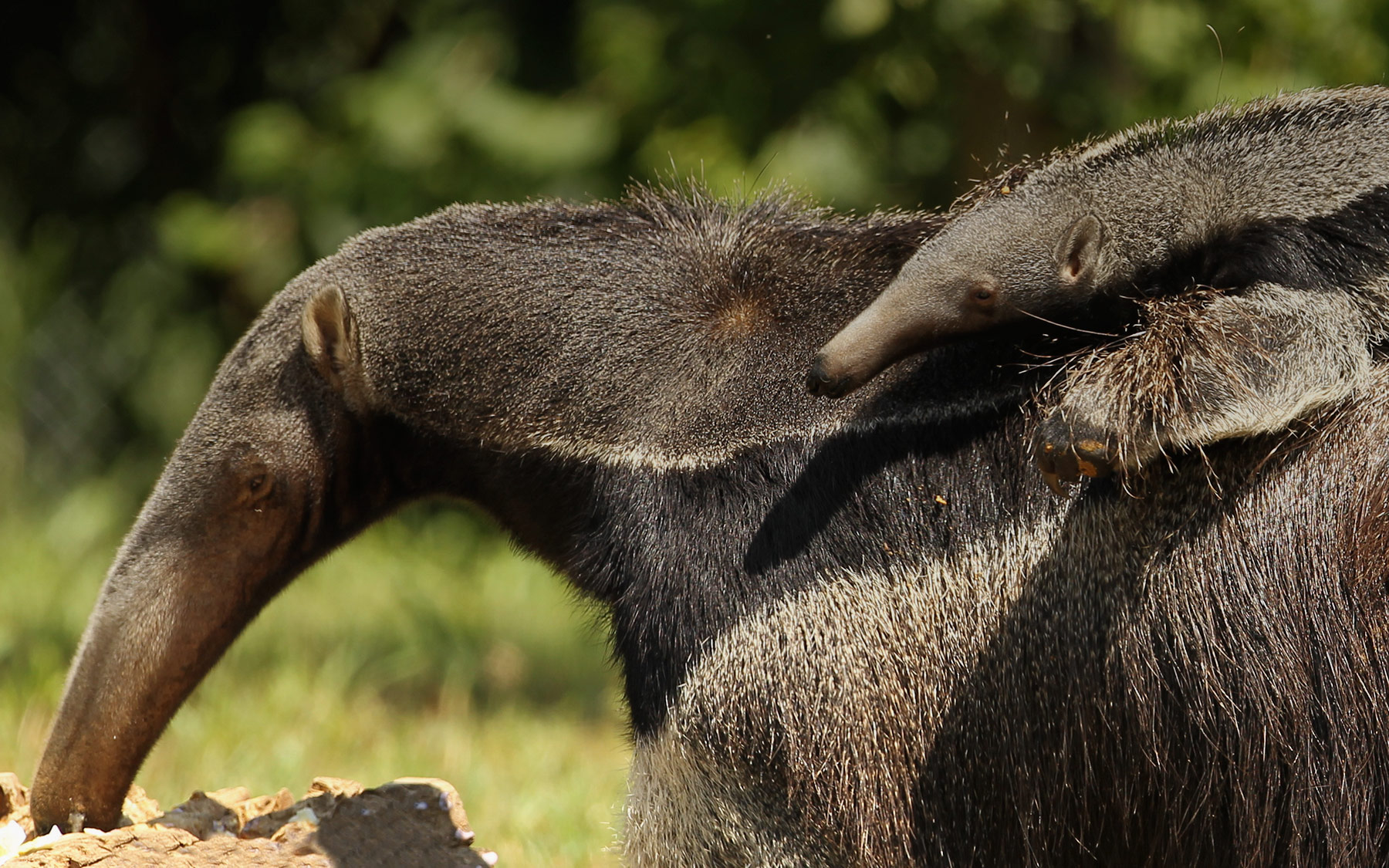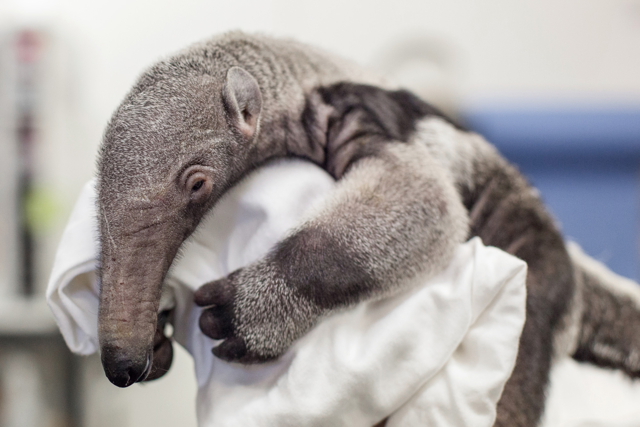As one of the premier breeding institutions for this threatened species, Nashville Zoo is working to increase that number and ensure their survival.
In 2000, giant anteaters Linus and Lucy came to Nashville Zoo from Guyana, marking the first importation of wild-born giant anteaters to a North American zoo in ten years. Fifteen more anteaters from South American countries made their way to the US over several more years, adding much needed new genetics into the captive anteater population. Today, Nashville Zoo is home to the largest collection of captive giant anteaters in the United States.
Since 2001, 19 giant anteaters have been born at Nashville Zoo’s off-exhibit breeding facility. This reproductive success has been enhanced by research projects done at the Zoo that focus on the biology of anteaters and their reproductive system. Projects include monitoring reproductive status in female giant anteaters by fecal hormone analysis and performing ultrasonographic exams to confirm pregnancy and monitor fetal development. Because giant anteaters do not exhibit any obvious physical or behavioral indicators of pregnancy, these alternative methods of confirmation are critical for the care and management of gestating females and neonates in zoos.
Anteaters are highly specialized feeders and their diet can be challenging to replicate in zoos. Nutritional research is essential in developing diets that meet their nutritional needs and stimulate natural feeding behaviors. Nashville Zoo has undertaken research projects to determine if diets currently being fed to captive anteaters contain sufficient concentrations of taurine, a nutritionally essential sulfur-containing amino acid, and if chitin supplementation in the diets would improve gastrointestinal function.
Nashville Zoo is recognized as a leader in caring for both giant anteaters and tamanduas. The Zoo’s animal care and veterinary staff are currently working on an anteater care manual in conjunction with the Association of Zoos and Aquariums' Species Survival Program that will provide husbandry guidelines and veterinary issues associated with these species.
Nashville Zoo’s giant anteater collection resides off-exhibit in a barn located behind the Historic Home. It has separate enclosures and outdoor roaming areas for each animal.





